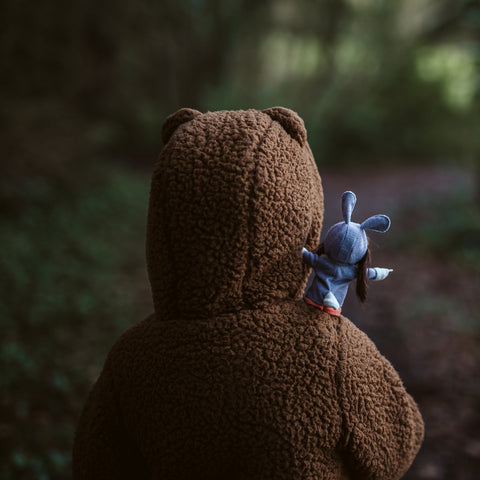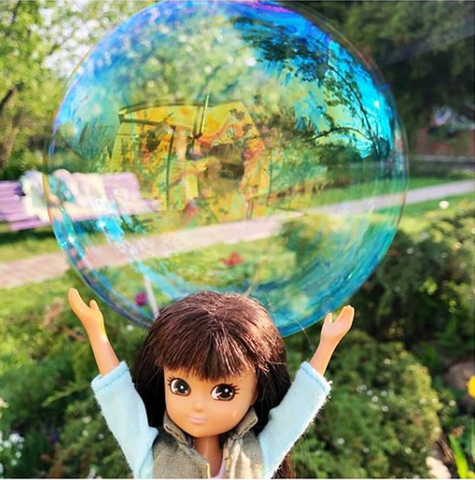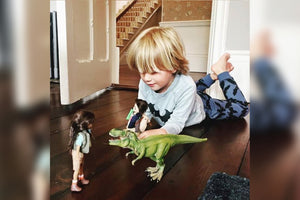We live in a fast-paced world and it is very easy to be distracted by everything around us. Mindfulness is the perfect antidote and allows us to slow down and appreciate who we are in the big scheme of things. But how can you best explain and practice mindfulness with your child?
Pick a time when your child is ready to be calm and quiet, as a child who is feeling too rambunctious and full of pent up energy may not be in the right frame of mind. A simple explanation such as this will suffice: Mindfulness is paying close attention to your body and mind and what is happening moment by moment and being okay with whatever you feel or think.
Being intentional and present in the moment is easier when you combine this mindset with child-friendly activities to help them gain better focus. Here are our five favorite mindfulness activities for kids:
1. Nature Meditation:
For this activity, find a comfortable, quiet place outdoors to sit on the grass. Have your child close their eyes and take a deep breath. With their eyes still closed, tell them to breathe slowly and focus on everything they hear and sense around them and to think about how all those sensations make them feel inside. This exercise is best done for several minutes and works best on days when the weather is fairly pleasant.

2. Muscle Awareness:
This activity is great for getting kids to focus on the different parts of their bodies. Have your child lie down on their back on a mat or blanket on the floor. Have them close their eyes and practice tightening every muscle in their body, from their face to their toes. You can guide them by quietly saying each part of their body to clench in succession or gently touching each section so that they can focus easily. Use words like squeeze and “hard as a rock” to help them maximize their effort.
Once they have held the tension pose, have them practice total relaxation by reversing the process. You will probably need to remind them of each body part to relax, as it is common to retain tightness in some areas while trying to focus on other areas. Use terminology like “let go” and “allow yourself to sink into the floor.” When your child is totally relaxed, simply have them focus on how that feels for several minutes.
3. Breathing Exercise with Bubbles:
This activity combines the joy of bubbles with the practice of controlling one’s breathing. Let your child hold the ready bubble wand and then inhale slowly and deeply and then exhale again very slowly, gently making and filling the bubble in slow motion. Tell them to focus on each bubble and watch carefully as they get bigger and bigger. Use this opportunity to teach them to think about how their breathing works...in their nose and out through their mouth.

4. Sensory Fun:
For this activity, fill several small bins with various substances that are safe and easy to touch and grasp. Some suggestions are sand, rice, cooked noodles, jello, shredded paper, small pebbles, finger paint, flour, just or whatever you have on hand. Tie a blindfold around your child’s eyes so that they can fully concentrate on touching, squeezing, and moving their hands through the different textures.
Have them think of descriptive words and focus on how each different item makes them feel. Is it satisfying? Weird? Gross? Fun? Tell them to squish, push, pull, and swirl their hands and fingers (or feet and toes!) around while engaging their touch senses.
5. Cloud Watching:
So often during mindfulness activities for kids, we focus deeper by closing our eyes, but for this one, it’s all about sight. On a beautiful day when clouds are drifting in the sky, have your child lie with you on their back on a blanket in the yard. Focus on the shifting shapes and try to describe every picture you both see. Compare and contrast your interpretations of the cloud picture and remember to focus on the sensation of your laughter when you “see” something silly.

I hope these suggestions guide you and your child into some meaningful experiences!
But WHY mindfulness? What’s the point?
Science supports that mindfulness has so many benefits! Compiled research shows that your kids can experience “reduced stress and anxiety, improved health, better sleep, improved focus and awareness, improved self-regulation, more compassion and kindness, stronger relationships, altruism, and even higher life satisfaction.”
These types of activities can be very instrumental in allowing your child to see their body and the world around them in a new way. It allows them to get in touch with their emotions and thoughts. By giving our undivided attention to a few simple movements, it can help us to see the profound.
Evidence for the Impact for Mindfulness on Children and Young People (in association with the University of Exeter) by Professor Katherine Weare gives us unique insight into the reasons to incorporate these types of activities and shows that they can even bring positive change in the structures of our brains!
These experiences remind us that our bodies are wonderful machines, plus they give us a chance to calm our racing thoughts and find meaning in each small bit of ourselves. Teaching our children to slow down and take notice of their environment gives them tremendous advantage.
![]() Fast Shipping
Fast Shipping![]() Subscribe to our Newsletter
Subscribe to our Newsletter![]() 🌟 New Global Competition 🌟
🌟 New Global Competition 🌟


















